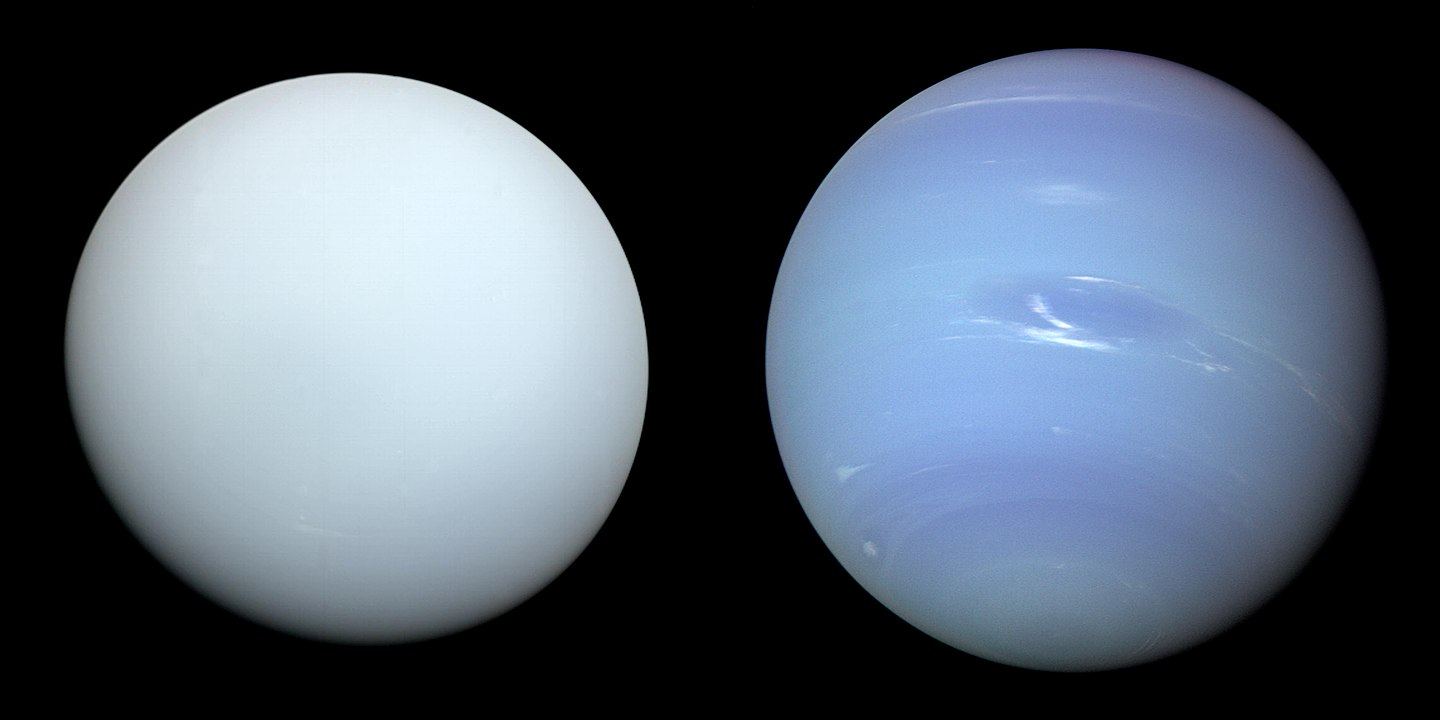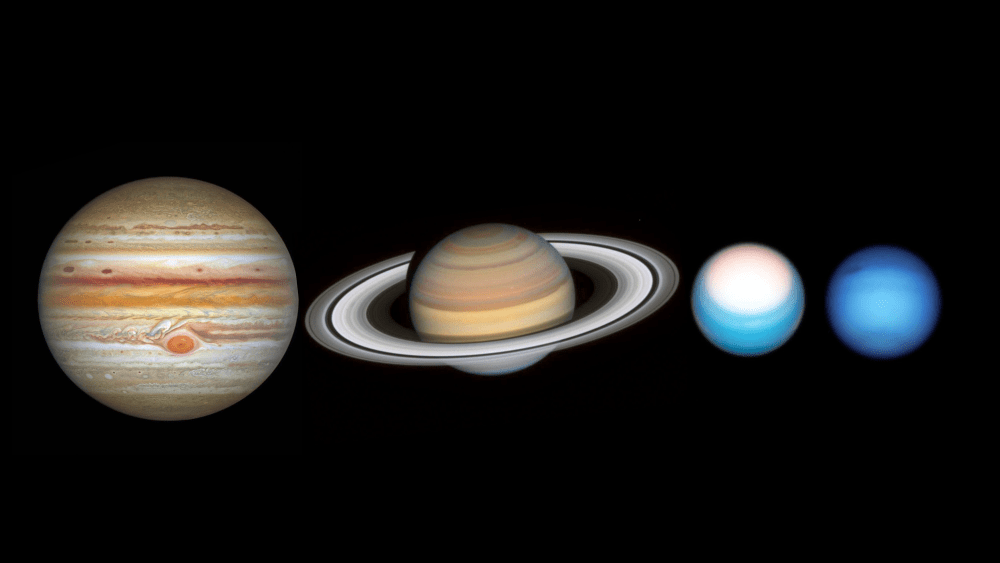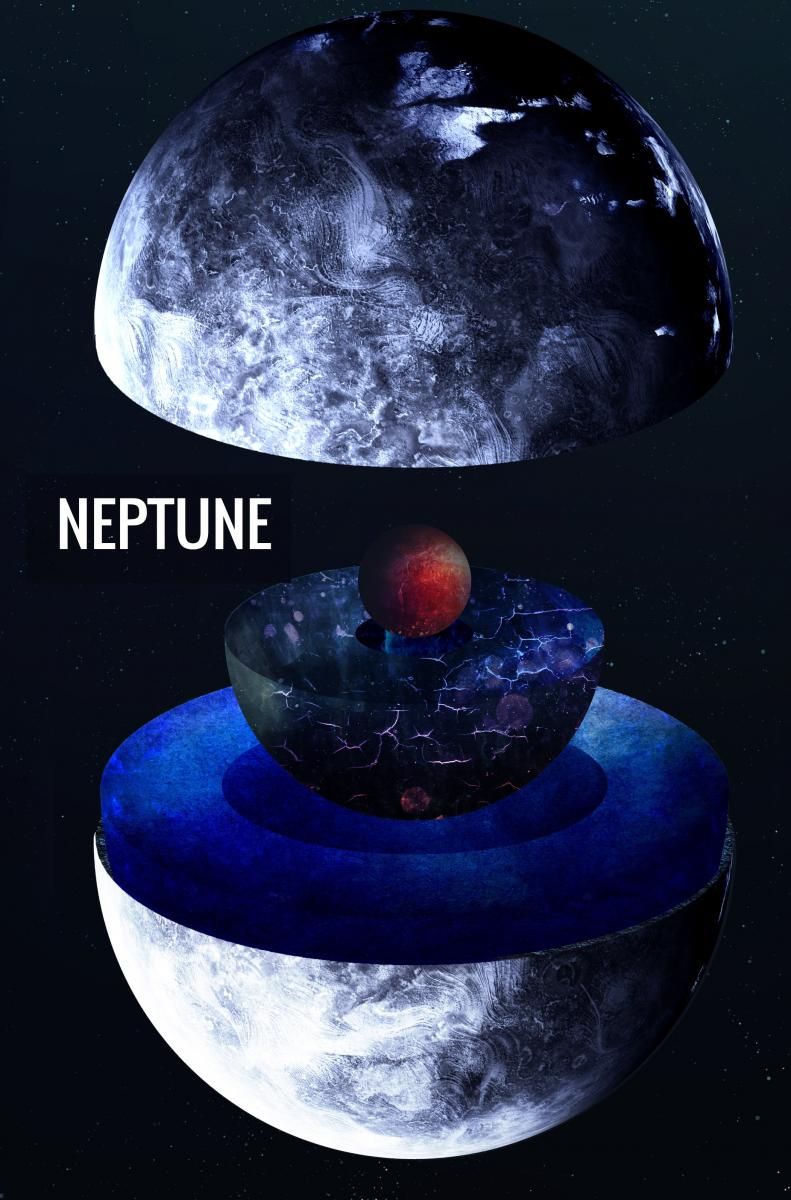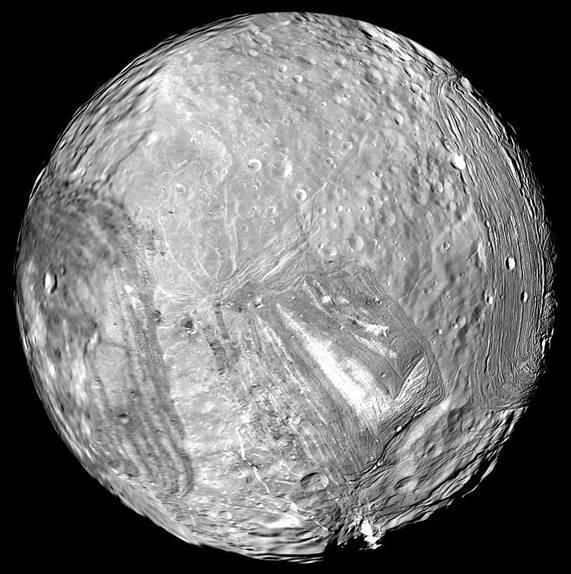In a recent study published in The Planetary Science Journal, a pair of researchers led by The Carl Sagan Center at the SETI Institute in California investigated the potential origin for the thick regolith deposits on Uranus’ moon, Miranda. The purpose of this study was to determine Miranda’s internal structure, most notably its interior heat, which could help determine if Miranda harbors—or ever harbored—an internal ocean.
Continue reading “Scientists Investigate Potential Regolith Origin on Uranus’ Moon, Miranda”Will We Ever Go Back to Explore the Ice Giants? Yes, If We Keep the Missions Simple and Affordable

It’s been over 35 years since a spacecraft visited Uranus and Neptune. That was Voyager 2, and it only did flybys. Will we ever go back? There are discoveries waiting to be made on these fascinating ice giants and their moons.
But complex missions to Mars and the Moon are eating up budgets and shoving other endeavours aside.
A new paper shows how we can send spacecraft to Uranus and Neptune cheaply and quickly without cutting into Martian and Lunar missions.
Continue reading “Will We Ever Go Back to Explore the Ice Giants? Yes, If We Keep the Missions Simple and Affordable”Why are Neptune and Uranus Different Colors?
Uranus and Neptune are similar planets in many ways. Both are ice giant worlds, both have atmospheres rich in methane, and both have a bluish color. But while Uranus has a pale blue-green hue, Neptune has a deep blue color. But why? Why would two planets so similar in size and composition appear so different? According to a recent study, the answer lies in their aerosols.
Continue reading “Why are Neptune and Uranus Different Colors?”Here are Hubble’s 2021 Photos of the Outer Solar System

If we had to rely solely on spacecraft to learn about the outer planets, we wouldn’t be making great progress. It takes a massive effort to get a spacecraft to the outer Solar System. But thanks to the Hubble Space Telescope, we can keep tabs on the gas giants without leaving Earth’s orbit.
Continue reading “Here are Hubble’s 2021 Photos of the Outer Solar System”Why do Uranus and Neptune Have Magnetic Fields? Hot ice
The outer “ice giant” planets, Neptune and Uranus, have plenty of mysteries. One of the biggest is where exactly they got their magnetic fields. They are strong at that, with Neptune’s being twenty-seven times more powerful than Earth’s, while Uranus’ varies between ? and four times Earth’s strength. Chaos rules in these electromagnetic environments, making them exceptionally hard to both understand and model. Now a team of researchers led by Dr. Vitali Prakpenka of the University of Chicago thinks they might have found the underlying cause of both the field’s strength and its randomness – “hot ice.”
Continue reading “Why do Uranus and Neptune Have Magnetic Fields? Hot ice”Giant Balls of Mush Made From Ammonia and Water Form in the Atmospheres of Uranus and Neptune
One advantage to planetary science is that insights from one planet could explain phenomena on another. We understand Venus’ greenhouse gas effect from our own experience on the Earth, and Jupiter and Saturn share some characteristics. But Jupiter also provides insight into other, farther out systems, such as Uranus and Neptune. Now, a discovery from a spacecraft orbiting Jupiter might have solved a long-standing mystery about Uranus and Neptune – where has all the ammonia gone?
Continue reading “Giant Balls of Mush Made From Ammonia and Water Form in the Atmospheres of Uranus and Neptune”What Mission Could Detect Oceans at Uranus’ Moons?
Exploration of ocean worlds has become a hot topic of late, primarily due to their role as a potential harbor for alien life. Moons that have confirmed subsurface oceans garner much of the attention, such as Enceladus and Europa. But they may not be the only ones. Uranus’ larger moons – Miranda, Ariel, and Umbriel could potentially also have subsurface oceans even farther out into the solar system. We just haven’t sent any instruments close enough to be able to check. Now a team led by Dr. Corey Cochrane at NASA’s Jet Propulsion laboratory has done some preliminary work to show that a relatively simple flyby of the Uranian system with an averagely sensitive magnetometer could provide the data needed to determine if those larger moons harbor subsurface oceans. This work is another step down the path of expanding what we think of as habitable environments in the solar system.
Continue reading “What Mission Could Detect Oceans at Uranus’ Moons?”Both Uranus and Neptune Have Really Bizarre Magnetic Fields

The magnetic fields of Uranus and Neptune are really, seriously messed up. And we don’t know why.
Continue reading “Both Uranus and Neptune Have Really Bizarre Magnetic Fields”Uranus X-Rays are Probably Reflected Sunlight, but There Could be Another Source as Well
X-rays offer a unique insight into the astronomical world. Invisible to the naked eye, most commonly they are thought of as the semi-dangerous source of medical scans. However, X-ray observatories, like the Chandra X-ray Observatory are capable of seeing astronomical features that no other telescope can. Recently scientists found some of those X-rays coming from a relatively unexpected source – Uranus.
Continue reading “Uranus X-Rays are Probably Reflected Sunlight, but There Could be Another Source as Well”Uranus’ Moons are Surprisingly Similar to Dwarf Planets in the Kuiper Belt
Astronomer William Herschel discovered Uranus—and two of its moons—230 years ago. Now a group of astronomers working with data from the telescope that bears his name, the Herschel Space Observatory, have made an unexpected discovery. It looks like Uranus’ moons bear a striking similarity to icy dwarf planets.
The Herschel Space Observatory has been retired since 2013. But all of its data is still of interest to researchers. This discovery was a happy accident, resulting from tests on data from the observatory’s camera detector. Uranus is a very bright infrared energy source, and the team was measuring the influence of very bright infrared objects on the camera.
The images of the moons were discovered by accident.
Continue reading “Uranus’ Moons are Surprisingly Similar to Dwarf Planets in the Kuiper Belt”






